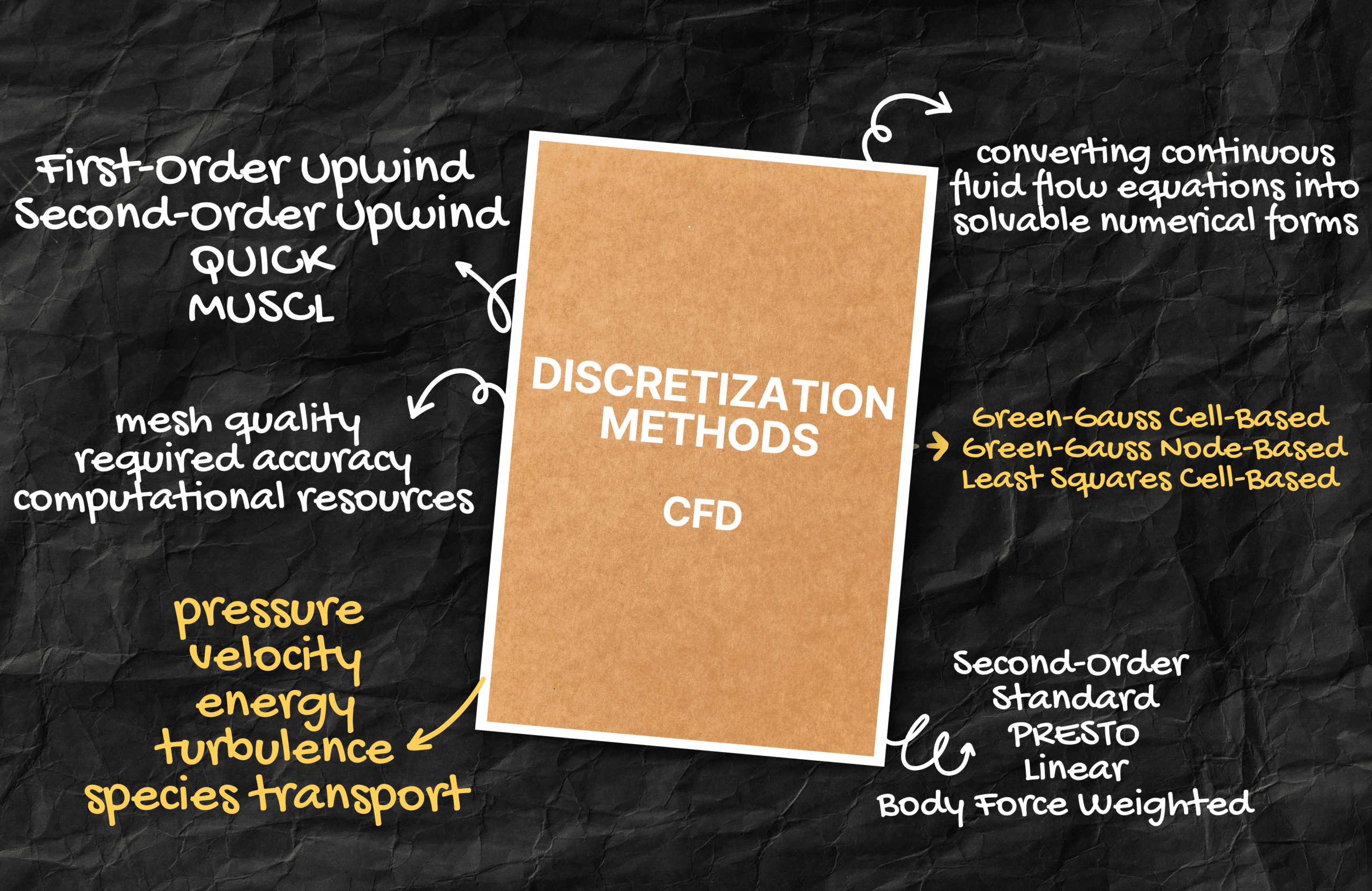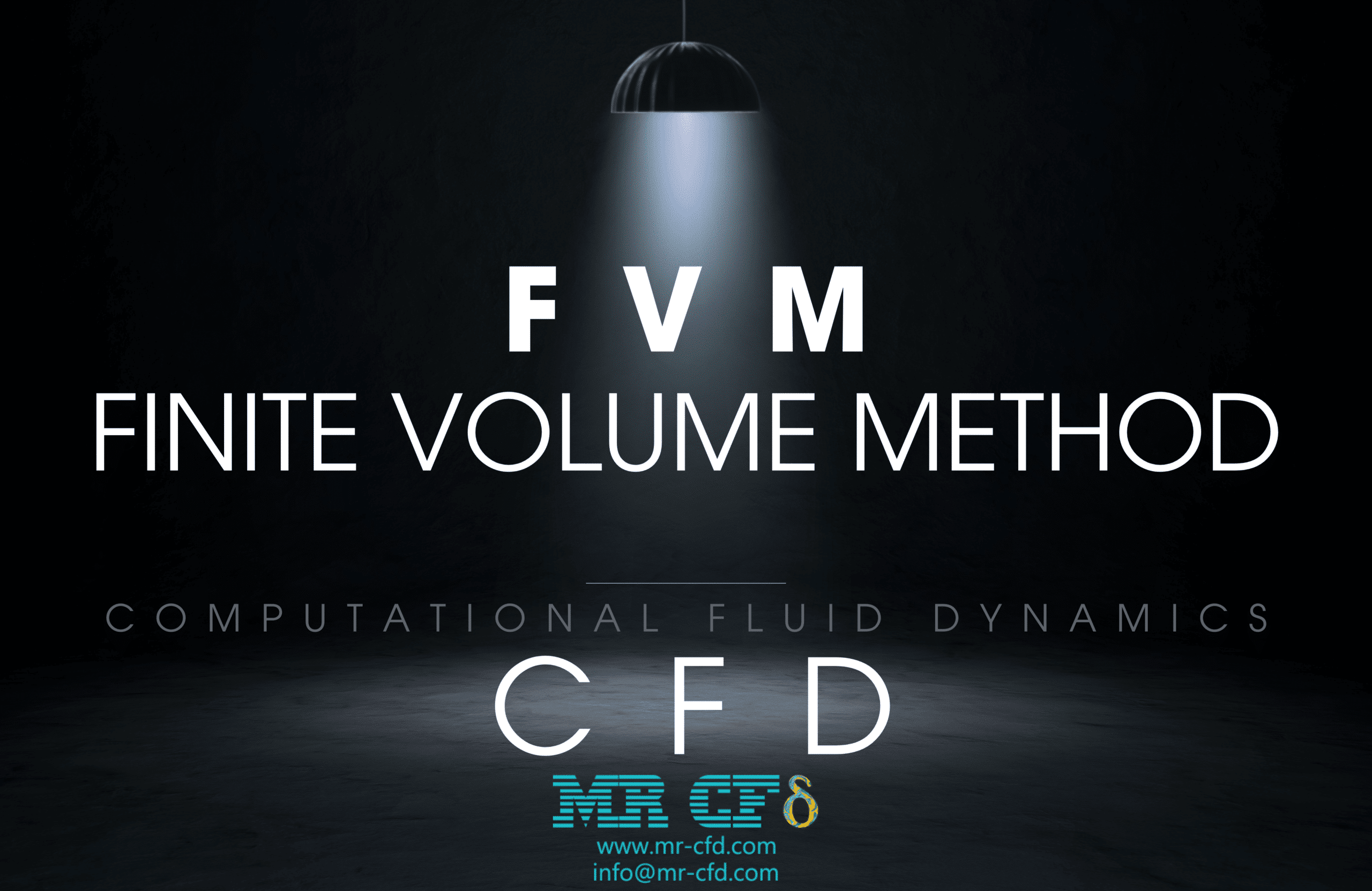Discretization Methods in CFD
Free
- Discretization methods in ANSYS Fluent are crucial techniques for converting continuous fluid flow equations into solvable numerical forms.
- Three main gradient calculation methods are available: Green-Gauss Cell-Based, Green-Gauss Node-Based, and Least Squares Cell-Based.
- Pressure discretization offers five options: Second-Order, Standard, PRESTO, Linear, and Body Force Weighted schemes.
- Momentum discretization includes First-Order Upwind, Second-Order Upwind, QUICK, and MUSCL schemes.
- Choice of method depends on mesh quality, required accuracy, and available computational resources.
- These methods apply to various parameters including pressure, velocity, energy, turbulence, and species transport equations.
To Order Your Project or benefit from a CFD consultation, contact our experts via email (info@mr-cfd.com), online support tab, or WhatsApp at +44 7443 197273.
There are some Free Products to check our service quality.
If you want the training video in another language instead of English, ask it via info@mr-cfd.com after you buy the product.
Description
Introduction to Discretization Schemes in ANSYS Fluent
In computational fluid dynamics, discretization schemes play a crucial role in solving flow conservation equations. ANSYS Fluent offers various methods for calculating gradients of variables, each with its own advantages and applications.
Gradient Calculation Methods
1. Green-Gauss Cell-Based Method
– Calculates gradient using cell-centered values – Formula: ∇φ = (1/V)∑(φf A⋅n) – Suitable for uniform grids – Less computationally intensive
2. Green-Gauss Node-Based Method
– Uses node values for calculation – More accurate for irregular meshes – Not available for polyhedral meshes – Computationally more expensive
3. Least Squares Cell-Based Method
– Uses neighboring cell values – Comparable accuracy to node-based method – More efficient than node-based method – Ideal for unstructured meshes
Pressure Discretization Schemes
Available Options:
1. Second-Order Scheme – Uses Taylor Series expansion – Considers pressure gradient across cells – Higher accuracy than standard scheme
- Standard Scheme
- Uses weighted average of adjacent cell pressures
- Based on distance from cell centers
- Suitable for simple flow configurations
- PRESTO (Pressure Staggering Option)
- Uses staggered control volume
- Ideal for all mesh types
- Particularly effective for complex flows
- Linear Scheme
- Simple averaging of adjacent cell pressures
- Equivalent to standard scheme in uniform grids
- Body Force Weighted Scheme
- Assumes constant normal gradient
- Optimal for known body forces
- Useful in buoyancy calculations
Momentum Discretization Schemes
Available Methods:
1. First-Order Upwind – Simple implementation – Lower accuracy – Stable solution
- Second-Order Upwind
- Higher accuracy than first-order
- Considers gradient information
- Better for complex flows
- QUICK Scheme
- Third-order accuracy
- Best for structured hexahedral meshes
- Reduces to second-order on unstructured grids
- MUSCL Scheme
- Third-order accuracy
- Applicable to all mesh types
- Better handling of discontinuities
- Available in both pressure-based and density-based solvers
Practical Applications
These discretization schemes are applicable to various parameters including: – Energy equations – Turbulent properties – Radiation model properties – Species mass fractions
The choice of scheme depends on:
- Required accuracy
- Computational resources
- Mesh quality
- Flow complexity
Understanding these discretization methods is crucial for achieving accurate CFD solutions while maintaining computational efficiency.




Reviews
There are no reviews yet.